Hoya Chelsea Plant (Hoya Carnosa) Care & Propagation Guide
Written by Iris
Nov 16 2021
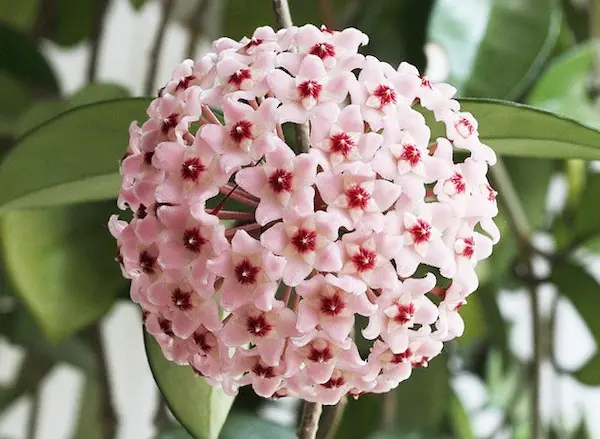
The Hoya Chelsea is a common houseplant. Hoya Chelsea has slender vines covered with waxy dark green leathery leaves, sometimes with silver or milky spots. Year-round bright indirect light is ideal for Hoya Chelsea.
Hoya Chelsea plants can grow quite long—up to 12 feet, in fact. Though you likely won't achieve that as a potted plant indoors. They can grow long and trail from a hanging basket, or you can train them to vine up a trellis. I have mine in a hanging basket, and it's lovely.
The leaves on the Hoya Chelsea do not unfurl at full size, either. So don't panic if the new growth is very small. Leaves sprout from the stems and remain small and lighter in color for a while, eventually growing to their full size and color.
Here's how to propagate the hoya chelsea from stem cuttings.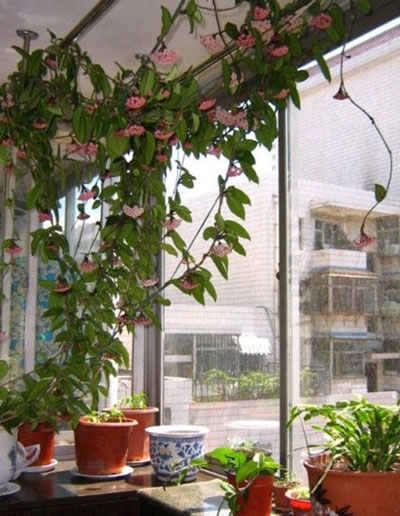
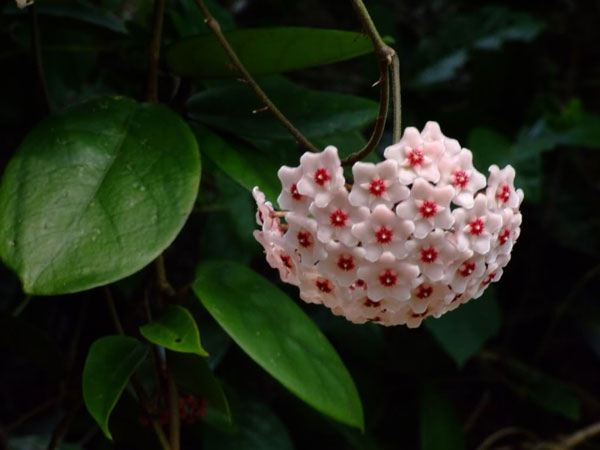
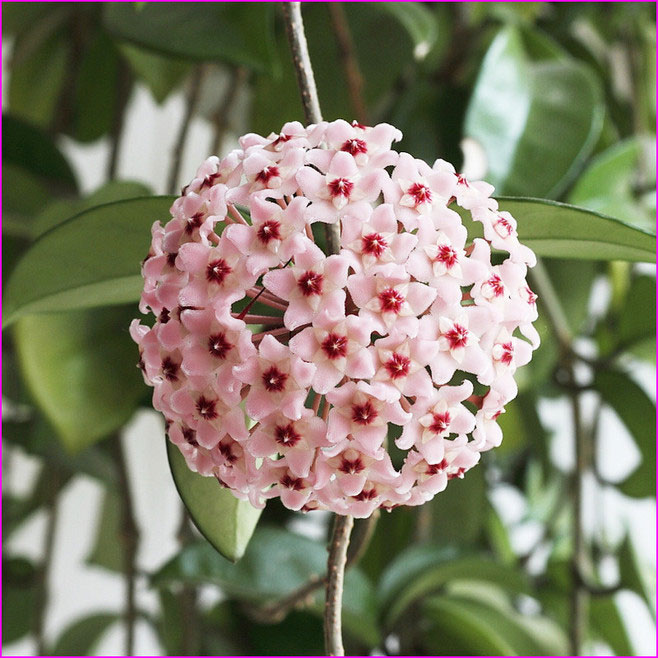
Hoya Compacta 'Indian Rope': Pale pink flowers and curly leaves; pretty even when the plant isn’t blooming
Hoya Cumingiata: Yellow flowers with red corona; fragrant
Hoya Kerrii Variegata 'Sweetheart Plant': Heart-shaped foliage with white margins; yellow and orange flowers
Hoya Onychoides: Purple flowers with an exaggerated star shape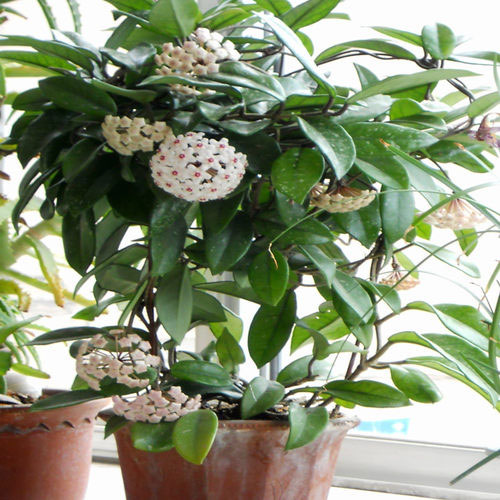
Read Next:
20 Popular Vine Plants Indoor To Grow
Hoya Carnosa (Wax Plant) Care Tips & Growing Guide
Hoya Australis Care & Propagation Guide
Heart Hoya Plant Care & Propagation Guide
Hoya Linearis Care & Propagation Guide
Hoya Polyneura Care & Propagation Guide
Shooting Star Hoya (Hoya multiflora) Profile
Hoya Chelsea plants can grow quite long—up to 12 feet, in fact. Though you likely won't achieve that as a potted plant indoors. They can grow long and trail from a hanging basket, or you can train them to vine up a trellis. I have mine in a hanging basket, and it's lovely.
The leaves on the Hoya Chelsea do not unfurl at full size, either. So don't panic if the new growth is very small. Leaves sprout from the stems and remain small and lighter in color for a while, eventually growing to their full size and color.
Hoya Chelsea Quick InfoHow to Propagate Hoya ChelseaHoya Chelsea Propagation from CuttingHoya Chelsea Propagation From SeedsHoya Chelsea Propagation From LeafsHow to Care for Hoya ChelseaHoya Chelsea Light RequirementsHoya Chelsea Soil CareHoya Chelsea WateringHoya Chelsea Temperature & Humidity CareHoya Chelsea Fertilizer CareHoya Chelsea Pruning CareHoya Chelsea Pests & DiseasesVarieties of Hoya PlantHoya Chelsea Plant Care FAQWhen is Hoya Chelsea going to flower already?Is Hoya Chelsea a Carnosa?How fast do Hoya Chelsea plants grow?
Hoya Chelsea Quick Info
| Scientific Name | Hoya Carnosa |
| Common Name | Hoya Chelsea |
| Category: | Flowering Houseplant |
| Available Colors: | Shades of pink, white, red, and bicolor |
| Bloom Time: | All year |
| Height Range: | 6-15" (15-38cm) |
| Space Range: | 12-15" (30-38cm) |
| Lowest Temperature: | 60° to 80°F (16° to 27°C) |
How to Propagate Hoya Chelsea
Hoya Chelsea Propagation from Cutting
The easiest way to propagate Hoya Chelsea is through stem cuttings. The best time to do this is in spring or early summer at the latest. Because Hoya Chelsea is growing at this point, it takes root faster and will start growing faster.Here's how to propagate the hoya chelsea from stem cuttings.
- Take a 4 - to 6-inch stem. Ideally, you want to choose a healthy-looking stem with at least two or three leaves.
- Using a sterile cutting tool, cut the stem just below the leaf nodes.
- Remove the lower leaves as they will be submerged in water or planted under the soil.
- You can also dip the cutting end in rooting hormones to help speed up the process.
- Cut the stems into a small container of fresh potting mixture.
- Water the soil and keep it moist.
- Place the new Hoya Chelsea somewhere warm, in bright indirect sunlight.
- You can cover the plants with plastic bags to increase the humidity. This will help the new Hoya Chelsea take root and grow faster in the initial phase.
- In about 3 to 4 weeks, the plant will take root, although you can only test it by gently pulling on your Hoya Chelsea. Resistance is a sign that roots are taking root.

Hoya Chelsea Propagation From Seeds
Hoya Chelsea does not usually use sowing for propagation. If you want to improve the survival rate of Hoya Chelsea propagation from seeds, you can sow in spring. Select plants in good growth condition, take out healthy and full seeds and do not use dry seeds. We can prepare suitable soil to keep it loose, breathable, and nutritious. Sow Hoya Chelsea seeds, then pour water into them and put them in the sun to wait for germination and emergence.
Hoya Chelsea Propagation From Leafs
As for Hoya Chelsea propagation from leaves, we should select strong leaves, especially those at the bottom of branches. We must not choose yellow leaves or leaves with fungal diseases. Don't choose too old leaves at the bottom of branches.
Hoya Chelsea is a kind of succulent plant. Of course, you can choose to breed with Hoya Chelsea propagation from leaves. We should prepare some small seedling pots in advance, and there should be larger and more drainage holes at the bottom. The soil is generally peat soil with perlite in the ratio of 1:1, or vermiculite.
Perlite and vermiculite are good materials for cutting propagation, and their air permeability and water holding capacity are relatively good. We can insert the leaves of Hoya Chelsea obliquely into the soil. We only need to insert the moon petiole about two or three centimeters into the soil.
Hoya Chelsea is a kind of succulent plant. Of course, you can choose to breed with Hoya Chelsea propagation from leaves. We should prepare some small seedling pots in advance, and there should be larger and more drainage holes at the bottom. The soil is generally peat soil with perlite in the ratio of 1:1, or vermiculite.
Perlite and vermiculite are good materials for cutting propagation, and their air permeability and water holding capacity are relatively good. We can insert the leaves of Hoya Chelsea obliquely into the soil. We only need to insert the moon petiole about two or three centimeters into the soil.
How to Care for Hoya Chelsea
Hoya Chelsea Light Requirements
Hoya Chelsea grows best in bright indirect light. Hoya Chelsea likes plenty of sunshine and lets it blossom more. However, avoid direct sunlight as this can burn the Hoya Chelsea leaves and change their color. A good spot inside is near the east-facing window, where it receives the morning sun. The Hoya Chelsea can tolerate direct morning sunlight. But even a few hours of the afternoon sun was too much for it. In this location, Hoya Chelsea prefers shade or away from Windows (at least 3 feet or more). When it comes to light, balance is key, as too little prevents plants from producing beautiful flowers. Also, when it reaches toward a light source, its growth slows and becomes leggy. Outdoors, plants prefer partial or mottled shadows.Hoya Chelsea Soil Care
Since the Hoya Chelsea likes less water, it is important to avoid soggy soil or mixtures that retain excessive moisture. A good mixture with good drainage is ideal for Hoya Chelsea. Hoya Chelsea also prefers slightly acidic to neutral soils (pH 6.1 to 7.3). Also, light, airy soil will allow its roots to get plenty of oxygen. The good news is that there are many different ways to achieve this soil. One commonly used is made from equal amounts of a mixture of peat, perlite and orchids. If you prefer to use fewer ingredients and thus less combination and mixing, use cactus mixture and perlite to further improve drainage.Hoya Chelsea Watering
Hoya Chelsea prefers dry soil conditions to many other houseplants. Hoya Chelsea doesn't need a lot of water. In fact, it is drought-tolerant because its fleshy leaves store water and keep it hydrated during periods of drought. On average, you can water every 7 to 12 days, depending on the intensity of sunlight and temperature. A good measure is to check the soil and wait for the top 1 to 2 inches of the top layer to dry before watering. Please note that the young Hoya Chelsea needs regular watering. They can't handle dry spells because Hoya Chelsea develops this tolerance as they mature. So it needs less water after 2 or 3 years. Too much water can turn the leaves of Hoya Chelsea plants yellow. Check the soil if you see this. Moist soil probably means it's getting too much water. On the other hand, if the plant starts to get wrinkled, or its leaves become soft, it needs water.
Hoya Chelsea Temperature & Humidity Care
Hoya Chelsea likes warm conditions. The Hoya Chelsea is used to the climate as it is native to China and India. The weather in both is generally mild to warm (although some parts of China are very cold). As a result, Hoya Chelsea is hardy to USDA zones 9B through 11. Also, it can't withstand freezing temperatures. The ideal temperature for growing a Hoya Chelsea is between 60 and 80 degrees. But it also doesn't mind hotter weather. The Hoya Chelsea is easily damaged by frost, so you need to keep it away from temperatures of 50 degrees or less. The ideal humidity for the hoya carnosa chelsea is 60% or higher. Fortunately, the Hoya Chelsea also performed well in terms of average household humidity. So, it's no problem between 30 and 40 percent. If you live in a dry area, a spray can be helpful as it will help to increase the humidity in the air around the Hoya Chelsea plants. However, you do need to do it at least 2 or 3 times a week.Hoya Chelsea Fertilizer Care
For optimal growth, feed your Hoya Chelsea with water soluble fertilizer diluted to half every month during spring and summer. The Hoya Chelsea is a lightweight breeder, so doesn't need a lot of plant food. In fact, be careful not to overfeed as it can damage the Hoya Chelsea roots. You'll also notice that the leaves become wrinkled and dry. If you notice this, flush the soil with water to get rid of excess fertilizer and salt. Alternatively, you can replant the Hoya Chelsea and make it fresh from new soil. Do not feed plants in the fall and winter. Also, avoid doing this during flowering. (Find more Vine Plants Indoor here.)Hoya Chelsea Pruning Care
When your Hoya Chelsea blooms, leave the peduncle as it may bloom. Removing the stems forces the Hoya Chelsea to produce new stems, which delays flowering and wastes energy.Hoya Chelsea Pests & Diseases
Hoya Chelsea doesn't have a lot of pest and disease problems. However, because of its idiosyncrasies and preferences, the Hoya Chelsea may be susceptible to them. When the Hoya Chelsea blooms, it emits a sweet smell that pets and bugs seem to love. Also, the Hoya Chelsea is prone to overwatering and overfeeding. Both conditions make it more susceptible to pests and diseases. In addition, the preference for high humidity makes moisture a constant threat. Therefore, proper care and regular check-ups are very important. This will prevent these headaches from happening. You can catch them early to prevent them from developing into pests, which are not only harder to treat, but also more dangerous to plants.
Varieties of Hoya Plant
Hoya Archboldiana: Cup-shaped creamy flowers with a maroon coronaHoya Compacta 'Indian Rope': Pale pink flowers and curly leaves; pretty even when the plant isn’t blooming
Hoya Cumingiata: Yellow flowers with red corona; fragrant
Hoya Kerrii Variegata 'Sweetheart Plant': Heart-shaped foliage with white margins; yellow and orange flowers
Hoya Onychoides: Purple flowers with an exaggerated star shape

Hoya Chelsea Plant Care FAQ
When is Hoya Chelsea going to flower already?
It’s hard to predict when these plants will flower, as it occurs when the plants reach maturity. When are they mature? Depends on the growing conditions! But rumor has it that keeping your plant tightly root-bound (in a smaller than normal pot) will accelerate blossoming. Don’t down-pot your plant, though (take it from a big pot and place in a smaller pot) as that can shock your Hoya, a no-no in Hoya plant care.Is Hoya Chelsea a Carnosa?
The Hoya Chelsea—or Hoya Carnosa Chelsea, as it's actually a variety of Carnosa—goes by many names: Honey plant, Chelsea Wax plant, Porcelain Flower, Wax vine, and more.How fast do Hoya Chelsea plants grow?
Hoya Chelsea show significant growth within a period of 4 to 6 months. However large-leaved Hoya varieties take a longer time to grow. It is obvious because they need more energy and more time to grow their individual leaves.Read Next:
20 Popular Vine Plants Indoor To Grow
Hoya Carnosa (Wax Plant) Care Tips & Growing Guide
Hoya Australis Care & Propagation Guide
Heart Hoya Plant Care & Propagation Guide
Hoya Linearis Care & Propagation Guide
Hoya Polyneura Care & Propagation Guide
Shooting Star Hoya (Hoya multiflora) Profile
Latest Updated
- Benefits of Bugleweed - 7 Science-backed Health Benefits
- Bugleweed Dangers & Side Effects - Is It Poisonous?
- How to Plant Evergreen Trees - What You Should Know
- When to Plant Evergreens - Grow Guide for Evergreen Trees
- 12 Wonderful Evergreen Shrubs for Your Garden
- 12 Popular Evergreen Plants with Pictures for Beginners
- When And How To Prune A Lilac Bush Like a Pro
- How to Grow & Care for Lilac Vine (Hardenbergia Violacea)
- Japanese Lilac Tree (Syringa Reticulata) Care & Propagation Guide
- Shumard Oak Pros and Cons - What to Know
Popular Articles
- Winter maintenance of Antirrhinum Majus
- How to Grow Terminalia Mantaly Tree
- How to Grow and Care for Crossostephium Chinense
- How to grow Antirrhinum Majus in spring
- Peristeria Elata (Dove Orchid) Profile: Info & Care Guide
- Underwatered Snake Plant (Sansevieria Trifasciata) - Signs And How To Fix
- How to Care for Brazilian Jasmine Plant (Mandevilla Sanderi)
- How to Grow & Care for Graptopetalum Purple Delight in Summer
- Rosa Chinensis (China Rose): Plant Growing & Care Tips
- How to Care for Baby Sun Rose (Aptenia Cordifolia)